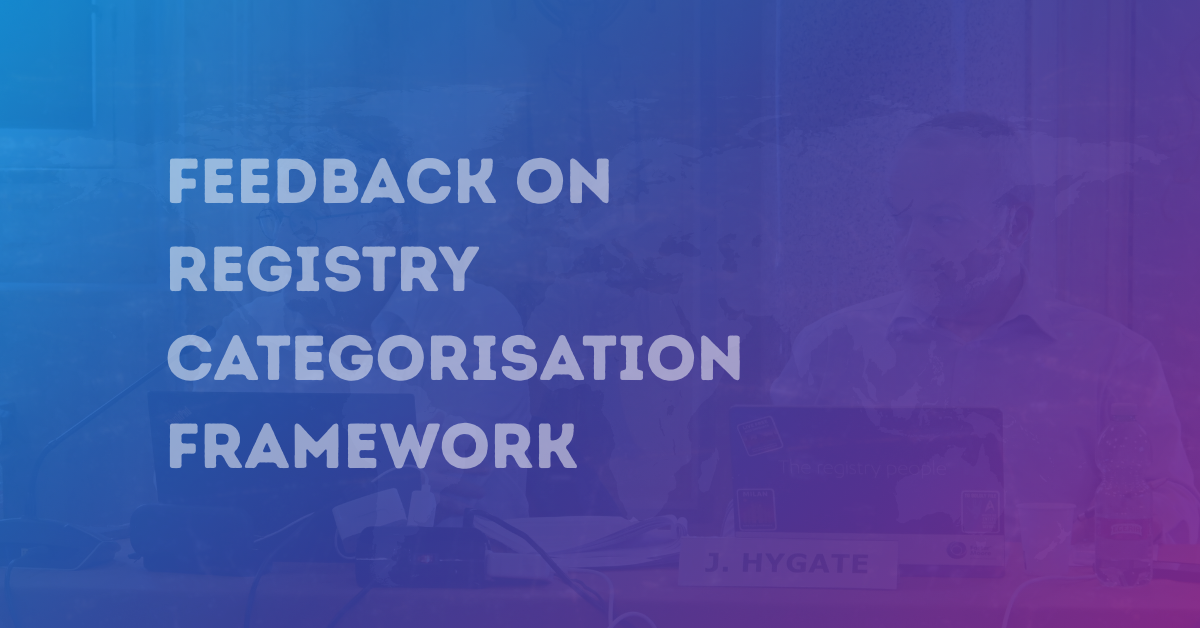At Foster Moore, we know that strong registries are built on strong foundations. That means shared language, clear definitions, and widely accepted best practices. Without these, registries risk being fragmented, misunderstood, or unable to interoperate effectively across borders.
That is why the ongoing consultation on best practices for electronic business registries is so important. The draft proposals under discussion seek to establish principles that can guide registries globally, ensuring greater trust, consistency, and alignment.
A key part of this effort is the ability to classify, or at least categorise, the many different types of registers that exist around the world. We developed a framework that we hope will be useful to the registry community. This framework provides the foundation on which universal best practice statements can be built, enabling better policy, clearer regulation, and stronger interoperability between systems.
Register Categorisation Framework
This is a framework we have been developing for some time through our work on MetaReg™, and we are sharing it now to invite feedback from the registry community. It proposes a set of parameters through which registries can be described and compared. These categories are not exhaustive, but they provide a strong starting point for dialogue and refinement.
1. By Type of Register (Object of Registration)
This dimension looks at the purpose of a register, what it is designed to record or regulate. Registers are typically created by the effect of legislation or regulation and serve functions such as establishing identity, proving ownership, ensuring compliance, or supporting taxation and oversight. Common types include:
- Person-based registers: citizenship, population, civil status, voter registers.
- Legal Entity-based registers: companies, partnerships, associations, charities, trusts.
- Asset-based / Collateral registers: land/property, vehicles, ships, aircraft, IP rights, securities.
- Obligation-based registers: liens, charges, mortgages, insolvency.
- Regulatory/sectoral/occupational registers: licenses, permits, professionals, regulated products/services.
- For example, in the Middle East, a business register acts as a licensing authority that issues business operating licenses.
2. By Mode of Operation
The way a register functions is just as important as its subject matter. This category captures operational characteristics that influence how registers are managed, accessed, and understood:
- Declaratory vs Constitutive
- Declaratory: records facts already established elsewhere (e.g. civil status register).
- Constitutive: legal rights/obligations arise upon entry (e.g. company incorporation, land ownership).
- Centralised vs Decentralised
- Centralised: one national authority maintains it.
- Decentralised: local or regional offices are part of the registry operation.
- Judicial vs Administrative
- Judicial: processes executed within a court or judicial environment.
- Administrative: processes executed by an agency or authority with no court involvement.
- Public vs Private
- Public: custodian is a public-sanctioned authority.
- Private: custodian is an individual or private company licensed to operate the register.
- Manual vs Digital
- Manual: paper-based, human processing.
- Digital: electronic databases, potentially fully or partially automated.
- Closed vs Open Access
- Closed: only accessible to officials or authorised parties.
- Open: accessible to the public or open data consumers.
- This can also be considered under the transparency characteristic of a register.
3. By Events Effected on the Register
Registers vary in the scope and frequency of the events they record. Some are relatively static, while others are highly dynamic or transactional:
- Static registers: record a one-time fact with minimal change (e.g. birth register).
- Dynamic registers: ongoing updates, modifications, or deletions (e.g. company register).
- Transactional registers: frequent high-volume event updates (e.g. securities, vehicle transfers).
- Lifecycle registers: track entities or assets from creation to termination (e.g. company register, land register).
- Interconnected registers: designed to exchange data with other registers (e.g. population, tax, social security).
4. By Trust
Trust reflects how stakeholders perceive the custodianship and accuracy of a register. This can range across a spectrum:
- High-trust registers: regarded as authoritative, functioning as a Single Source of Truth (SSOT).
- Low-trust registers: rely on self-declaration or file-in-good-faith models with lower levels of verification.
5. By Legal Effect
Perhaps the most critical dimension is the legal weight of registration. Events effected on the register may or may not have direct legal effect, and this can be broken down as follows:
- Constitutive Effect
- Rights, obligations, or legal status are created, altered, or extinguished by registration.
- Without registration, the right does not exist in law.
- Examples:
- Company registers: a company does not legally exist until it is entered.
- Land registers (in many European civil law systems): ownership transfers only upon registration.
- Patent registers: IP rights exist from the moment of registration.
- Evidentiary Effect
- Registration does not create the right but serves as formal proof of its existence.
- Registers carry high evidentiary value in courts or administrative processes.
- Examples:
- Civil status registers (birth, marriage, death): events occur outside the register, but the entry provides legal evidence.
- Shipping registers: proof of nationality and ownership, although ownership may also be established via contracts.
- Administrative/Informational Effect
- Registration creates a record used for oversight, monitoring, or compliance.
- It does not directly affect rights but may be required for regulatory or policy purposes.
- Examples:
- Taxpayer registers: provide lists of taxpayers for compliance, but liability arises from law, not registration.
- Professional registers: the license or qualification creates the right; the register serves primarily as an administrative record.
Your Feedback Matters
Your perspective as registry operators, policymakers, academics, or technology providers is vital. This consultation period is the opportunity to validate, challenge, and extend this framework so that it works for all types of registries across jurisdictions.
Our goal is simple: we want to contribute meaningfully to the BPER project, help shape a best practice statement that reflects the diversity of registries worldwide, and ensure the registry community has a framework we can all stand behind.
Should you have any questions or would like to provide feedback, you may:
- Or reach out to our representatives at Foster Moore: John Murray or Justin Hygate
